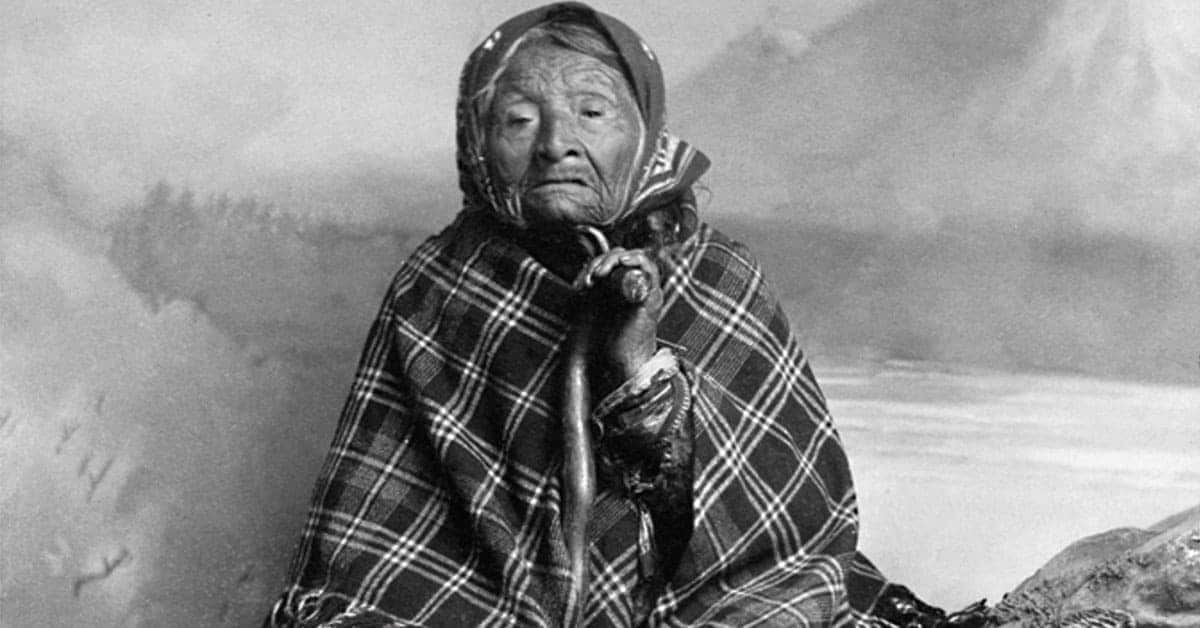Following the signing of the Treaty of Point Elliott in 1855, which resulted in the Native American tribes of the greater Puget Sound region vacating lands which they had inhabited for centuries, one Native American woman chose to defy the edicts of the treaty and continued to live among the white settlers of Seattle until her death on May 31, 1896. She would become known as “Princess Angeline” and her portrait would be immortalized by the work of renowned photographer and ethnologist Edward Sheriff Curtis.
Kikosoblu was born in 1811 in what is now Rainier Beach in Seattle, Washington. She was the eldest daughter of Chief Si’ahl, from whom the city of Seattle got its name. Chief Si’ahl was the leader of the Suquamish and Duwamish tribes and was a signatory of the Treaty of Point Elliott in 1855. The treaty resulted in the relocation of the native tribes onto a reservation and paved the way for white settlement of Seattle.

Chief Si’ahl befriended one of Seattle’s founders, David Swinson “Doc” Maynard, a pioneer, businessman and doctor. Doc Maynard was an advocate of Native American rights and it was he who proposed that Seattle should be renamed after Chief Si’ahl. It was Maynard’s second wife, Catherine, who renamed Kikisoblu, Angeline, and the title “Princess” was given to her because she was the daughter of Chief Si’ahl. In reality, it was used, for the most part, condescendingly.

Angeline, unlike her father, refused to accept the terms of the Point Elliott Treaty. She defied its stipulation that she, along with the other members of the Suquamish and Duwamish tribes, should relinquish ownership of their land and make way for white settlement. She instead chose to remain and live among these settlers, in a decrepit two-room waterfront cabin. Angeline’s defiance was tolerated by the settlers, who saw her as harmless, even as a tourist attraction for visitors to their new settlement. Princess Angeline represented a link to the past, a remnant of a conquered people.
After the settlers had arrived, Princess Angeline lived a life far from the life of luxury one would associate with the royal title bestowed upon her. Being the daughter of Chief Si’ahl, Angeline would have been free from a life of menial work, which instead would have been carried out by the captured slaves of rival Native American tribes. But to make a living amongst the settlers, Angeline dug for clams and searched for mussels on the shore and sold them door to door. She made handwoven baskets to sell to the settlers and also did their laundry.
Like her father, Chief Si’ahl, Angeline converted to Christianity. She was well-liked and held in higher regard than the majority of her fellow Native Americans by the church ladies of Seattle. It was a frequent sight to see Angeline sitting on the sidewalk, rosary beads in hands, praying. However, her relationship with the settlers wasn’t entirely without strife. Angeline was subject to regular harassment from the local boys, who would throw rocks at her, and she was known to carry some around with her for throwing back. Some of the settlers also referred to her derogatorily as the “old crone.”

